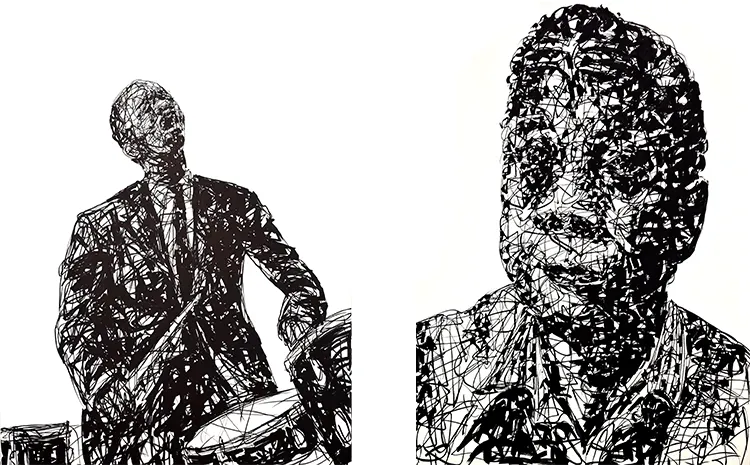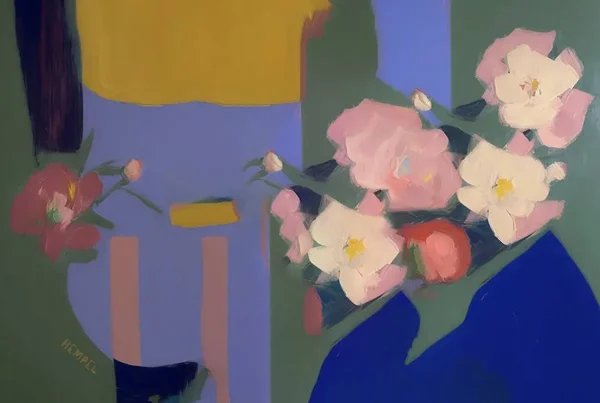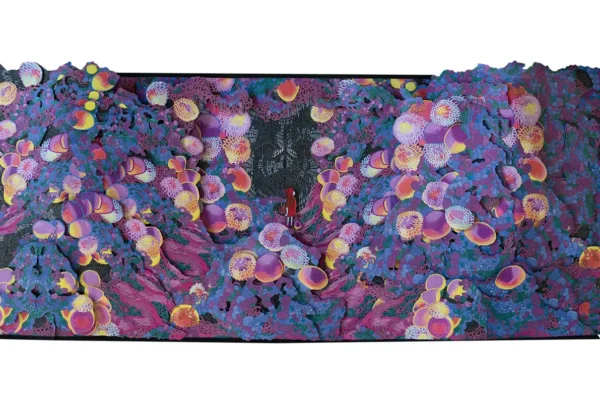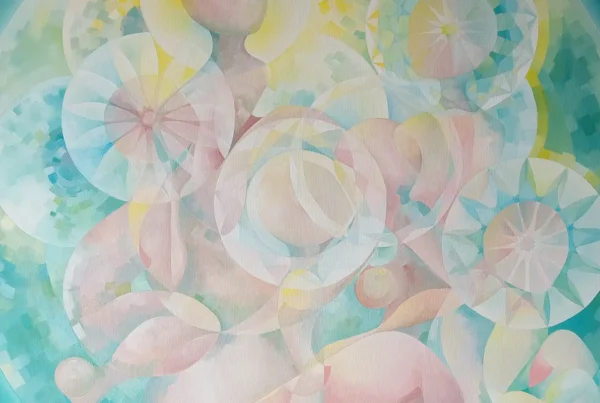“To know there was a chance that you may have not been able to ever do it again was motivation enough.”
A Vision Restored: The Defining Moment That Shaped an Artist
Daniel Jenkins, a contemporary artist based in Jersey City, has cultivated a strikingly unique style that merges classical portraiture with the expressive freedom of abstraction. His work thrives on the juxtaposition of opposing forces—minimalism and chaos, precision and spontaneity—creating compositions that challenge the boundaries of traditional art forms. However, beyond his technical skill and artistic philosophy lies a personal journey marked by resilience. Jenkins’ creative evolution is deeply intertwined with a pivotal moment in his life: the temporary loss of his vision due to a brain tumor. This life-altering experience not only influenced his perspective on art but also ignited an unrelenting drive to create.
Shortly after completing art school, Jenkins began experiencing unexplained vision problems. What initially seemed like a minor issue escalated into a serious medical condition, as doctors discovered a tumor pressing against his optic nerves. The progressive damage left him on the verge of complete blindness, a devastating reality for anyone, but especially for an artist. A successful surgery removed the tumor, miraculously restoring his eyesight—an outcome that was never guaranteed. Confronted with the possibility that he might have lost his ability to create forever, Jenkins emerged from the ordeal with a newfound sense of urgency. He saw his recovery as a sign to fully dedicate himself to his craft, making a commitment to never take his artistic talents for granted.
Determined to rebuild his skills and push his creative boundaries, Jenkins embarked on an ambitious challenge: producing one finished piece of artwork every day for an entire year. This rigorous practice not only honed his technical abilities but also set the foundation for his signature style. Over time, his disciplined figurative work began to blend seamlessly with abstract expressionism, a transition that reflected both his formal training and personal transformation. Through this fusion, Jenkins found a way to translate his experiences, emotions, and philosophical inquiries into striking visual compositions—solidifying his place in the contemporary art scene.
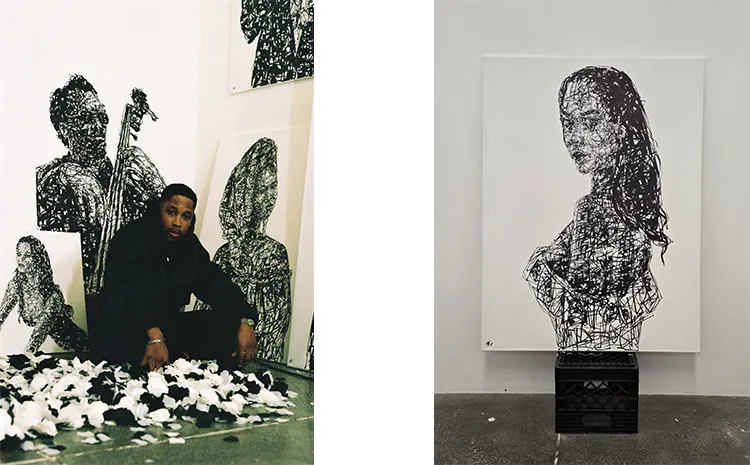
Daniel Jenkins: The Art of Contradiction and Balance
Jenkins’ artistic style is defined by his ability to bring together seemingly opposing elements, crafting a visual dialogue between contrast and harmony. His work is neither purely abstract nor strictly figurative but exists in a space where both coexist. By bridging the gap between realism and abstraction, Jenkins challenges the notion that art must adhere to a singular approach. His compositions embody an intentional tension—melding meticulous portraiture with gestural spontaneity, and balancing intricate detail with bold, minimalist strokes.
The core of his artistic philosophy lies in his fascination with duality. He deliberately juxtaposes structure with disorder, exploring how disparate elements can find equilibrium within a single piece. His work often plays with themes of chaos and simplicity, reflecting both the unpredictability of life and the clarity that can emerge from disorder. The influence of Mark Rothko is evident in the emotional depth of his abstract elements, while Caravaggio’s dramatic lighting and disregard for convention resonate in his figurative work. This synthesis allows Jenkins to navigate both tradition and innovation, continuously reshaping his approach to portraiture.
Rather than relying on conventional fine art materials, Jenkins has embraced an unconventional tool: the Sharpie. His decision to use this everyday object stems from his desire to break away from traditional artistic constraints. The limitations of the medium—its inability to create gradients or delicate shading—force him to approach composition differently, emphasizing bold contrasts and intricate line work. This constraint-driven methodology has become integral to his artistic identity, reinforcing his commitment to pushing boundaries and redefining what fine art can be.
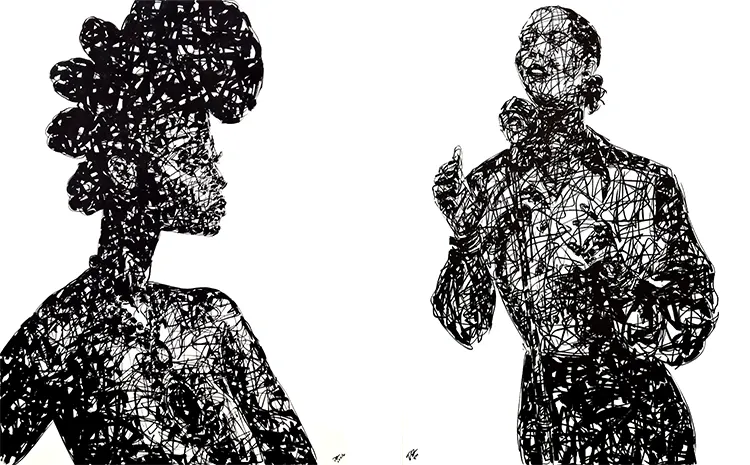
Ancestral Inspirations: The Significance of the Maasai Series
Among Jenkins’ many works, one series holds particular personal significance—his ongoing collection of portraits centered around the Maasai Tribe. This project is more than just an exploration of cultural aesthetics; it is a deeply personal homage, inspired by his mother’s admiration for the tribe’s striking visual identity. The Maasai’s intricate beadwork, vibrant robes, and traditional customs have long fascinated Jenkins, providing him with a rich source of inspiration. By capturing the essence of their heritage through his unique artistic lens, he pays tribute to both the tribe’s visual legacy and his mother’s appreciation for their artistry.
Each piece within the series is a study in both representation and abstraction, as Jenkins applies his signature fusion of structured portraiture and gestural mark-making. The juxtaposition of intricate line work with expressive spontaneity mirrors the cultural duality of the Maasai people—rooted in tradition yet constantly evolving. His use of the Sharpie as a primary medium adds a raw, immediate quality to the works, reinforcing the authenticity and directness of his artistic process.
Beyond the personal connection, the series serves as a broader meditation on identity, heritage, and the ways in which visual storytelling can preserve cultural narratives. By focusing on the Maasai, Jenkins extends his exploration of contrast and balance beyond formal elements and into thematic territory. His work becomes a bridge between past and present, tradition and reinterpretation—offering viewers an intimate yet universal reflection on cultural expression.
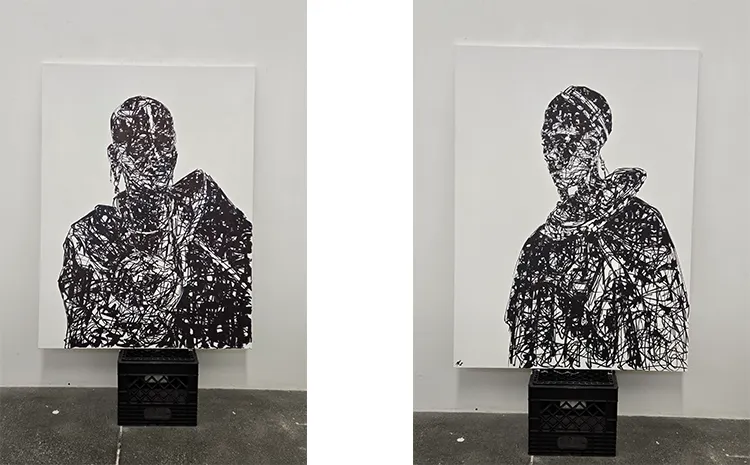
Daniel Jenkins: Pushing Boundaries and Expanding Horizons
Jenkins’ commitment to artistic evolution extends beyond his personal practice and into his ambitions for the future. With an ever-growing international presence, he has already showcased his work in Graz, Austria, and continues to seek opportunities to exhibit globally. His aspirations are not tied to a singular location; instead, he envisions his work reaching audiences across different cultures and artistic landscapes, reinforcing his belief that art transcends geographical boundaries. Larger-scale pieces and further international exhibitions remain at the forefront of his goals, as he pushes his creative practice into new territories.
While he remains dedicated to his signature fusion of abstraction and portraiture, Jenkins is constantly refining his techniques and expanding his conceptual framework. His influences extend beyond the realm of visual art, drawing inspiration from the films of David Lynch and the improvisational energy of jazz—particularly the works of John Coltrane. These external artistic influences inform his approach, allowing him to weave elements of cinematic storytelling and musical spontaneity into his visual compositions. Much like a jazz musician improvising within a structured melody, Jenkins navigates between control and chaos, structure and fluidity, ensuring that each piece maintains an organic sense of rhythm.
Despite his growing success, Jenkins remains grounded in the philosophy that action is the antidote to distraction. His disciplined approach to creation, honed during his year-long daily drawing challenge, continues to drive his work ethic. He understands that artistic momentum is built through consistency, and he refuses to allow external distractions to derail his creative focus. As he continues to push the boundaries of his practice, Jenkins stands as an artist unafraid to embrace uncertainty, challenge convention, and redefine the possibilities of contemporary art.
